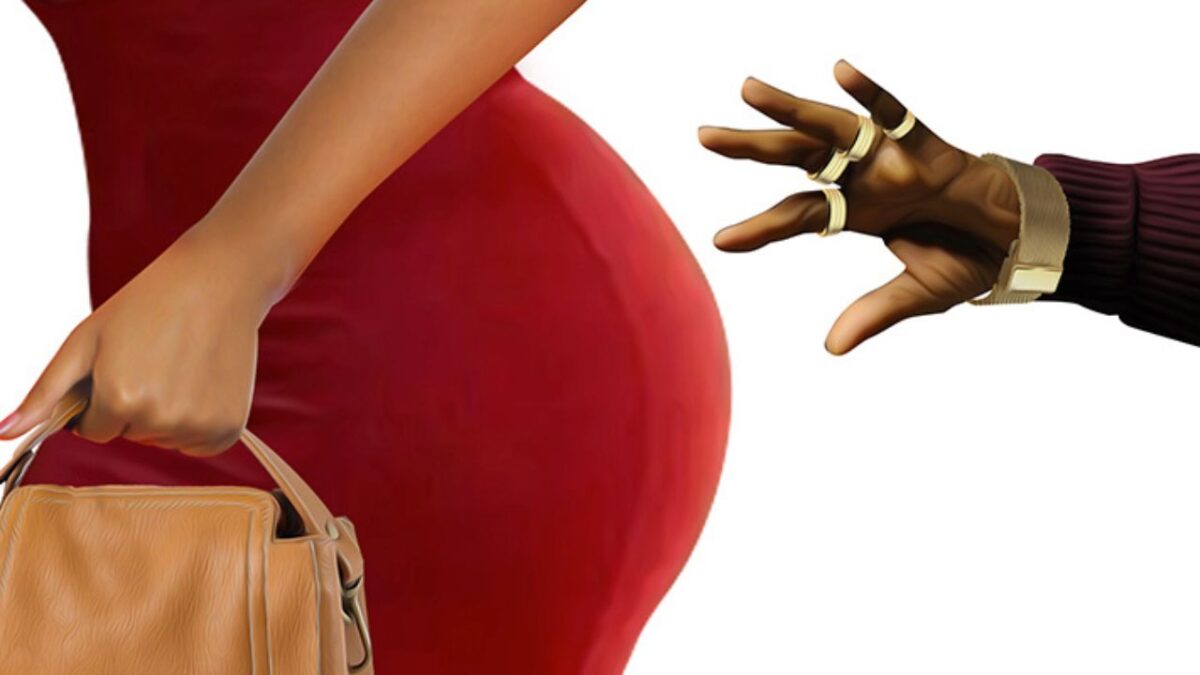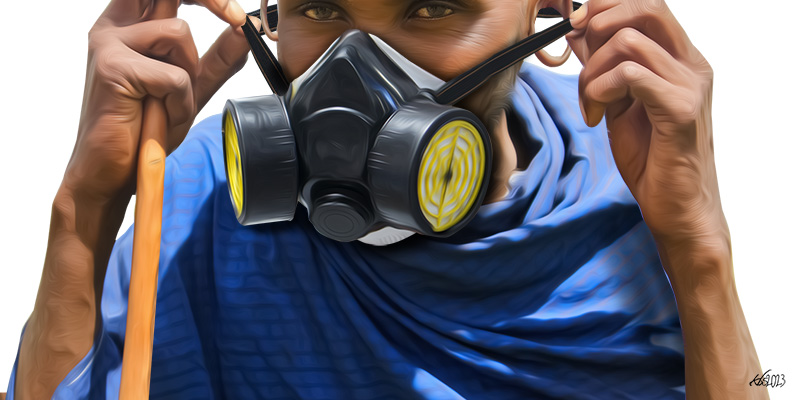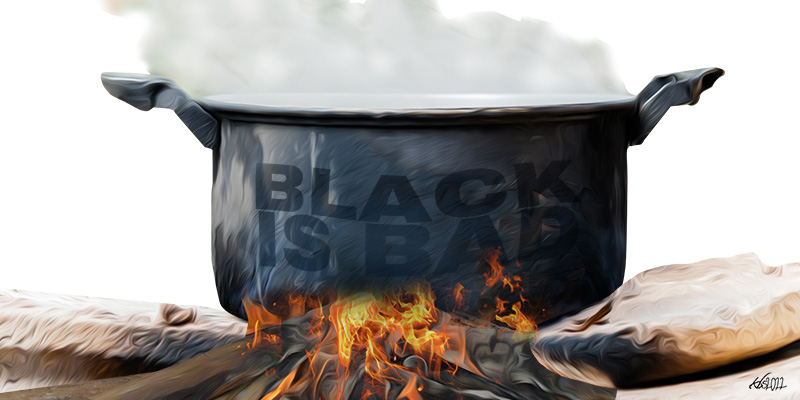“Justice, justice, justice for Sharon Beryl Otieno and baby Sharon,” declared Sharon Otieno’s mother, Melida Auma, during the emotional send-off for her daughter on the 20th of October at Magare village in Homa Bay county. The constant drizzle throughout the funeral service reinforced the solemnity of the occasion. It was one month and two weeks since the kidnapping and brutal murder of the seven-month pregnant Sharon Otieno, the hitherto unknown student from Rongo University who shot to fame after death. The heinous murder shocked the country and the story hogged the headlines for weeks.
On the 4th of September, the mutilated body of Sharon Otieno was discovered lying in the open next to a thicket on the fringes of Kodera Forest in Homa Bay. A farmer named Moses Ongili of Ogero village stumbled upon Sharon’s corpse while herding cattle and raised the alarm before filing a report at the Oyugis Police station.
The autopsy conducted by the Government Pathologist, Johansen Oduor, revealed the grisly details that lead to her death. Sharon sustained eight stab wounds – seven on her person and one directed at the foetus in her abdomen. Discarded condoms were found around the scene of the crime. The story of her murder went viral on social media and all news outlets. Fingers were pointed at Migori Governor Okoth Obado, who was named a person of interest following his romantic involvement with the murdered student. The specifics of the torrid affair were splashed in the gossip pages; the married governor admitted to an affair with Sharon and acknowledged impregnating her. Sharon was 26 years old when she died.
On 9th September, the lifeless and naked body of a 22-year-old woman identified as Dorice Musiya was found by two women fetching firewood in Kakamega forest. A rope was found next to her body. The story received a single mention in the media, which seemed more interested in splashing salacious headlines on the Sharon murder case. Dorice Musiya was soon forgotten.
Eleven days later, on September 20th, the body of 29-year-old Monica Kimani was found by her brother George Kimani after he broke into her flat in the Kilimani neighbourhood of Nairobi. Monica had gone uncharacteristically silent barely a day after arriving from Juba, South Sudan. George found his sister dead in the bathtub, her head dangling, severed from ear to ear. Her mouth was covered in tape and her hands and feet were tightly bound. The water in the bathtub was still running.
On September 24th , Joseph Irungu Kuria, aka Joe Jowie, was arrested as a key suspect in the Monica Kimani murder case. Jowie, who is engaged to the well-known TV journalist Jackie Maribe, dragged his fiancée’s name into the ongoing investigation. Ms Maribe was subsequently arrested on September 29th for being an accessory to the murder. The details begin to unravel, a story that has all the markings of a Netflix crime drama. Monica is buried at her family home in Kairi village, in Gilgil on September 28th. Her father, Paul Kimani, cries for justice for his murdered daughter.
Both the Sharon Otieno and the Monica Kimani murders become sensational media stories and trending topics on social media. They become compelling spectacles, with their toxic mix of sex, scandal, fame, power and crime. The stories were teased out and milked for their shock value. The public gobbled up the minute details of the developing story that moved into court dramas.
With the economically depressed conditions in the country, which are exacting a toll on the livelihoods of ordinary citizens, and the never-ending political power plays divorced from living reality, the murder of two young women linked to prominent personalities creates the perfect diversion. In the weeks that followed, the news pages were filled with details of their personal lives, which led to a succession of conspiracy theories.
Public commentary on Sharon and Monica’s deaths began to highlight what is viewed as a social problem. Both young women, who hailed from humble backgrounds, were framed as overnight successes enjoying opulent lifestyles through unclear circumstances. Moral lessons drawn from the incidents leaned towards a refrain to young girls. “Avoid dirty old men.” “Young girls, please forget easy money and be safe. Stay away from sponsors.”
With the economically depressed conditions in the country, which are exacting a toll on the livelihoods of ordinary citizens, and the never-ending political power plays divorced from living reality, the murder of two young women linked to prominent personalities creates the perfect diversion.
Sex and the Sugar Daddy
Coincidentally, at the end of August 2018, two days before the death of Sharon Otieno, the BBC published a provocative lifestyle feature titled “Sex and the Sugar Daddy” that profiled three young Kenyan women who spoke about the transactional sex culture that has become pervasive in the country. This so-called “sponsor culture” draws an attractive young woman into an intimate sexual affair with a wealthy older man in exchange for financial benefits. This inter-generational transactional sexual affair is not unique to Kenya. Similar patterns have been attributed to the Blesser and Mentorship cultures in South Africa and Nigeria, respectively. The BBC feature tracked the three young women talking openly about their pursuit of happiness financed by wealthy benefactors.
The BBC’s Africa correspondent, Nyasha Kadandara, had contacted me for an interview while doing research for her piece. She wanted to know my views on the roots of the “socialite” culture and the impact of TV shows, such as Nairobi Diaries that tracks a group of young urban women living a glamorous lifestyle, with sex and high life on the menu. (Nairobi Diaries is heavily inspired by Keeping Up with the Kardarshians reality series.) My quick response was that it was nothing new. The “Sugar Daddy” phenomenon has been with us since I was a child in the late 70s and early 80s. Young women had always been warned about “dirty old men”. The marked difference was the normalisation of such inter-generational affairs – the result of the slandered “loose women” who had turned shame on its head and now owned the tag with tenacity and pride.
Nairobi’s “socialite” celebrities, such as Huddah Monroe and Vera Sidika, came to public attention under the sneering veneer of a contemptuous public. They were shamed as personalities with questionable morals. These “socialites” brazenly lapped up the free publicity and turned their notoriety into savvy personality brands that are now mainstream media staples. Sidika and Monroe are today caricatured as success stories, and were cited by many young women in the BBC feature as inspirational figures.
In a follow-up story to the gruesome death of Sharon and Monica, the Nation newspaper ran an arresting headline:“ Butchered So Young: Victims Yet to Find Justice”. The story highlighted the murders of ten young women that had made national news within the last year. The story came came with the rider: If you are a young and upwardly mobile female, you could be at risk of falling victim to a cold-blooded murder, a crime of passion. Young ladies beware. The Big Bad Wolf lurks these streets.
Blaming the victim
In our media culture, there is rarely any condemnation of the men abusing power and sustaining these inter-generational sexual transactions. It appears much easier to blame the victim. It is a narrative that borrows from the European fairy tale of Little Red Riding Hood about a young naive girl who is lured into bed by a big bad wolf. What is never said – perhaps because it is plainly obvious – is that the nature of the big bad wolf is to prey on the vulnerable. This is now the established sexual double standard. Blame the victim for getting in harm’s way. She should have known better. Wolves will always be wolves.
The validity of sexual violence claims made by women in Kenya is subjected to three dominant frames. The victims are subjected to a male gaze: Was the violence exaggerated by a man-hating feminist’s claim of patriarchal privilege? Was the violence justified within the moral lens of religious values (i.e. was it an honour killing)? Was the violence consistent with the assigned rights and duties of a woman within an African cultural context? This victim-blaming explains why it is so difficult for women to seek justice in cases of sexual assault.
In our media culture, there is rarely any condemnation of the men abusing power and sustaining these inter-generational sexual transactions. It appears much easier to blame the victim.
Sexual violence that results in death is a social problem that has a long history in this country. The recurring patterns of men who hold some level of power sexually abusing and murdering young women has been a headline press staple since the 80s. In 1980, there was the murder case involving an American sailor from Rhode Island called Frank Joseph Sundstrom who confessed to killing a commercial sex worker known as Monica Njeri and who got off with a fine of just $35 that he reportedly did not even pay before he fled the country. The story was a front-page spectacle. In 1983, the High Court in Mombasa found James William Tyson, another white American sailor, innocent of murdering Lucy Kabura, a bar hostess. The trial was front-page news for several days but to date, Lucy Kabura’s murder remains unresolved.
Owaah blog details a list of unresolved murders of young women, all of which involved rape and a mysterious male power broker who was never brought to book. Captain Judy Angaine, Julie Ward, Careen Chepchumba and Mercy Keino are all names of victims who became famous after death. The script has not changed since they died and the list of families demanding justice continues to lengthen.
Hypersexualised images
These stories play out in the media and are served as entertainment. The subtext of all these stories is that the female body has been commodified and an entire economy has grown out of the exploitation of erotic capital. It is passé nowadays that sex sells everything, including air fresheners with curves. Looks-based discrimination is normalised in the media. Popular female personalities in the media are celebrated for their physical attributes. The callipygian ideal for women is a recognised feature of sexual desire. The hypersexualised images of professional women we see in the media and the cultural norm in our social media spaces reflects an unrelenting pursuit of sensuality.
The message young people hear and see is that eroticism is an investment in self. Raising one’s sexual potency is a currency that can be translated into real material benefits. The evidence is broadcast. Divas rule. The revenge of the slay queens. The tyranny of socialites. The poster girls are feted and condemned in the same breath, but in the fine print we find the recurring warning: Flirt responsibly.
The avoidance of sexual assault thus becomes a personal responsibility. On the other hand, men are socialised to relate to sexual violence as the wages of sin. The female body is a sexual object that has been commodified to be purchased, governed and disciplined by its owner.
The message young people hear and see is that eroticism is an investment in self. Raising one’s sexual potency is a currency that can be translated into real material benefits. The evidence is broadcast. Divas rule.
Since the advent of the post-colonial state, Kenyan society has established a sexual hierarchy of “good girls” and “bad girls”. The good girls are broadly known as wife material and are socially-coded to operate within morally-sanctioned boundaries of socially-approved sensuality. The bad girls are malayas or prostitutes. Anyone who does not meet the narrow criteria of respectability becomes a bad girl, to be despised, feared but secretly admired and desired for her brazen attitude. In the end, the bad girls are not meant to succeed for they endanger the natural social order. Sexual slander is the weapon used to undermine the uncompromising woman’s reputation.
Yet women’s advancement in this country has always been the domain of “bad” women. Grace Onyango, Wambui Otieno, Wangari Maathai, Phoebe Asiyo, and Charity Ngilu were women who defied the odds to blaze a trail for many. The Kenyan poet and writer Aleya Kassam ran the critically acclaimed “Too Early For Birds” series as a stage production titled Brazen that focused on pioneer female achievers in Kenya who remained unbowed and stood for what they believed in, often paying a heavy price for sticking out their necks. The production provided a historical context to the forgotten women who remained brazen in attitude and in deed. There are tonnes of untold stories of pioneer women who shattered glass ceilings only to die quietly from internal bleeding caused by glass wounds. Brazen played to a sold-out theatre in Nairobi.
However, every time these gender prejudices realities are highlighted, they are dismissed as feminist propaganda. We live in social gendered order that places gender relationships as competition, a battle of the sexes. If women gain, men will lose. When men lose, it is because of women rising. These narratives have become fairly established and prevent the interrogation of our gender dynamics beyond these inherited rivalries. Therefore, when a female commentator raises the troubling spectacle of femicide, the counter response is “What about the extrajudicial killings of young men in Mathare and Dandora? Why are we not talking about the boy child?”
The policing of female potential and lives by a capitalist-patriarchal system is not some wild conspiracy by lesbian-leaning feminists with foreign funding engaging in hashtag activism. The cry for the plight of the girl child is not just another NGO-ised funding buzzword. The #MeToo movement is not just some American white privilege concern that is envious of male power. Women need conscious allies who do not minimise their concerns. It does not mean that we do not care about the plight of boys and must therefore adopt an #AllLivesMatter counter stance to defend our own sense of vulnerability.
Those on the receiving end of hate and prejudice are often advised to be humble and to persevere. Don’t provoke their anger, the victim is reminded, for the blame will lie squarely on you. It is deeply encoded in our social context and power relationships at all levels. We are sometimes unable to contextualise the social systems that run on abuse and exploitation. It is much easier to pass the buck down the line, and in our primed-for- conflict culture, too many women find themselves backed into a corner screaming for their lives while all around they are chastised for crying wolf.
Sex as a commodity
Sex in Kenya is now a commodified product, sold over the counter. In the last few decades, we have evolved from a society of conservative prudery to one of lusty open liberal sexual attitudes.
In 1987, the popular Kenyan TV soap opera Tushauriane seemed set to revolutionise local production standards. The show was funded by the U.S. Agency for International Development (USAID) as part of birth control activism in the Third World. The script, written by Felix Osodo and directed by Greg Adambo, displayed production values far above the standards of the day. The show was extremely lean on sexual content by present standards but a few episodes were banned by President Daniel arap Moi for their “sexualised content”, which amounted to a single kiss on screen.
Times have changed. In contemporary Kenya, shows like the Nairobi Diaries reality series that premiered on K24 TV and which follows the alluring and controversial lives of a cast of TV vixens (socialites), are considered common fodder. Binyavanga Wanaina, Kenya’s most celebrated writer, is openly gay. Leaked social media nudes are a standard celebrity faux pas. The most popular morning radio show hosted by Maina and Kingangi dishes out saucy details on sex and relationships and the biggest Kenyan movie in 2018 (Rafiki) is a story about a taboo same-sex love relationship between two young women.
There appears to be an individual ideology that confuses sexual liberty with sexual revolution. It feels like freedom and walks like freedom until a new sensational story of another young girl who was sexually violated and murdered turns into a media spectacle.
Maybe, as many have said, freedom is an illusion that comes at a price. We are resigned to the reality of living with unjust legacies and the repeated evidence that access to justice is a privilege of wealth and status doled out at the mercy of benevolent oppressors. The privileged allies who should rally and speak up for the victims in the varied quests for social justice are largely absent and mostly muted.
As a society, we have to move from this narrow idea of only demanding justice when it directly benefits us. Sexual violence is not a women’s problem; it is a societal problem and demands the active participation of men as conscious allies in the struggle for a just society for all.
There appears to be an individual ideology that confuses sexual liberty with sexual revolution. It feels like freedom and walks like freedom until a new sensational story of another young girl who was sexually violated and murdered turns into a media spectacle.
Assassinated Burkina Faso leader Thomas Sankara articulated this ideal best:
“The revolution and women’s liberation go together: We do not talk of women’s emancipation as an act of charity or out of a surge of human compassion. It is a basic necessity for the revolution to triumph. Women hold up the other half of the sky”.
The men of this country must add their voice and condemn sexual violence in all its shades when the wolves and hyenas show up dressed as men.
“Justice for Sharon, Justice for Monica, Justice for All.”








